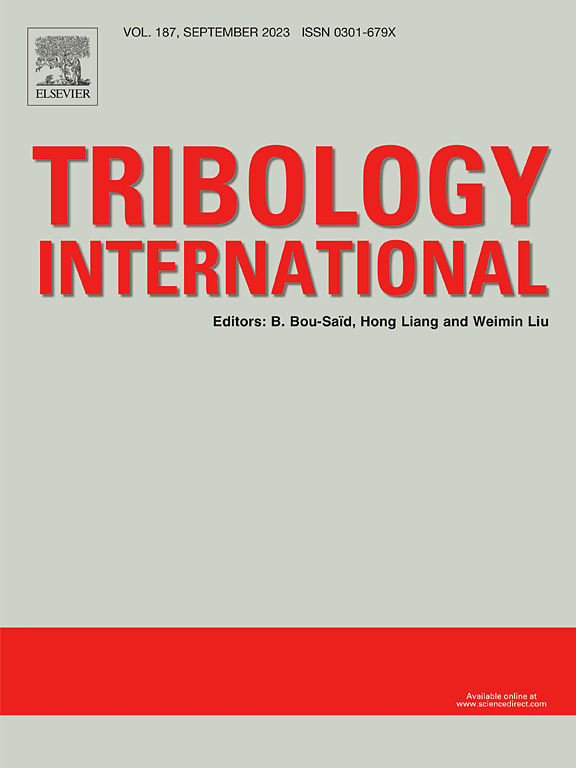Study of load distribution and ellipse truncation for angular contact pitch bearings-blade assembly subjected to external loads
IF 6.1
1区 工程技术
Q1 ENGINEERING, MECHANICAL
引用次数: 0
Abstract
Pitch bearings are components used in variable-pitch rotors to connect the hub and the blade, while allowing the blade to rotate around its long axis. Most of the studies concerning pitch bearings focus on four-point contact bearings that are widely used in large size wind turbines. However, very few studies consider duplex pairs of angular contact ball bearings that can be found in variable-pitch propellers or small-sized wind turbines. An efficient five degrees of freedom calculation method is proposed to study the load distribution in such bearings while considering the specific design of the blade-hub assembly. The external loads due to aerodynamic and centrifugal effects are prescribed on the blade, and then distributed between the bearings supporting the blade. The governing equation of the blade bending is considered, to further solve the initially statically indeterminate problem. The performance of three bearing arrangements (back-to-back, face-to-face and tandem) is compared in terms of load distribution, with the tandem arrangement being very specific to variable-pitch rotor application, where two angular bearings mounted in the same direction are loaded by the centrifugal force. Additionally, a novel method is proposed to predict the risk of ellipse truncation for each arrangement.
求助全文
约1分钟内获得全文
求助全文
来源期刊

Tribology International
工程技术-工程:机械
CiteScore
10.10
自引率
16.10%
发文量
627
审稿时长
35 days
期刊介绍:
Tribology is the science of rubbing surfaces and contributes to every facet of our everyday life, from live cell friction to engine lubrication and seismology. As such tribology is truly multidisciplinary and this extraordinary breadth of scientific interest is reflected in the scope of Tribology International.
Tribology International seeks to publish original research papers of the highest scientific quality to provide an archival resource for scientists from all backgrounds. Written contributions are invited reporting experimental and modelling studies both in established areas of tribology and emerging fields. Scientific topics include the physics or chemistry of tribo-surfaces, bio-tribology, surface engineering and materials, contact mechanics, nano-tribology, lubricants and hydrodynamic lubrication.
 求助内容:
求助内容: 应助结果提醒方式:
应助结果提醒方式:


